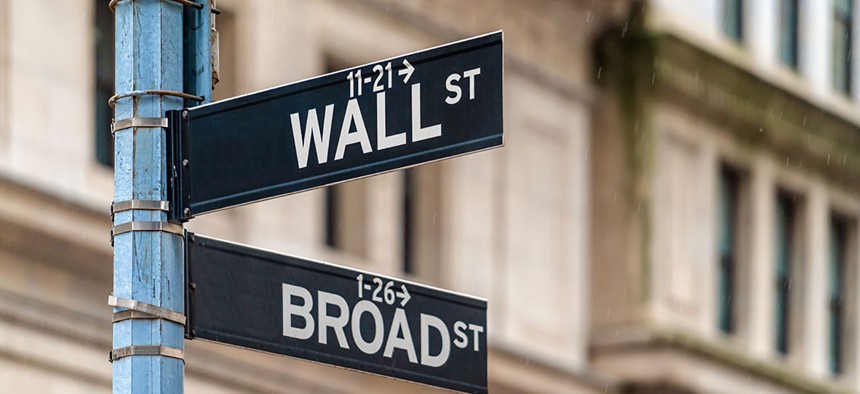New York State
The 1619 Project shines a light on New York’s troublesome past
New Yorkers, like many residents of liberal-leaning Northern states, tend to forget that their home’s history has been defined by racism and slavery. But The 1619 Project serves as a much-needed reminder.

A Wall Street intersection. TZIDO SUN/Shutterstock
New Yorkers, like many residents of liberal-leaning Northern states, tend to forget that their home’s history has been defined by racism and slavery – but The 1619 Project serves as a much-needed reminder.
The New York Times project, launched with this week’s issue of the Times Magazine, encompasses essays, articles and short works of fiction to educate readers about the United States’ inescapable legacy of slavery, and how this legacy has informed American society, politics and the economy.
Here is some of the most important information in the project about New York’s history of using and profiting off of enslaved people:
Enslaved people built Wall Street. Literally.
The Dutch West India Company first imported African men – 11 total – to what would become New York City in 1626. By the early 1700s, 40% of New York households had enslaved people, and these slaves were responsible for building important city infrastructure, including Governor’s Island, roads, municipal buildings, churches - and Wall Street.
The actual wall, which Wall Street is named after, was built by enslaved people at the city’s first slave auction site. The nascent financial industry that would be based there and later become synonymous with the street itself helped to fund the slavery economy.
The sugar industry has roots in New York
In the 1720s, ships were being sent from New York – then home to the massive Rhinelander Sugar House refinery – and New Orleans to the Caribbean to import sugar and enslaved people in exchange for meat, flour and ship building supplies.
Eventually, the New York’s enslaved people accounted for 20% of the population, thanks to the sugar trade. This rise in the enslaved population contributed to the New York General Assembly’s decision to make it illegal for more than three enslaved people to meet in 1730, and authorizing the use of “a common whipper” for slaves.
New York invested heavily in the cotton trade
Cotton, which was once the most profitable crop produced in the U.S., was mainly grown in the South. But New York profited off cotton plantations and the enslaved people doing the grueling work of picking cotton.
As the cotton industry continued to grow, New York became one of the main trading hubs for cotton worldwide during the 19th century. Despite laws passed in 1799 to slowly abolish slavery and gradually phase it out, New York remained heavily invested in Southern plantations throughout the 1800s.
Planters from the South looking to purchase more land and enslaved people turned to New York banks for loans and sought out New York insurance companies to safeguard their new “inventory.” A rough fabric called “negro cloth” used by enslaved people on Southern plantations were also manufactured in New York factories. And ships from New York would travel to New Orleans to participate in both the domestic and international trading of enslaved people.
New York City was a destination to see minstrel acts
In the 1830s, New Yorker Thomas Dartmouth Rice rose to fame for creating and performing the minstrel character known as “T.D. Rice,” which he performed in full black-face by coloring his face with burnt cork.
It is believed, according to the Times’ Wesley Morris, that Rice came upon his inspiration for his act as an unknown actor in his 20s when he spotted “a decrepit, possibly disfigured old black man singing while grooming a horse on the property of a white man whose last name was Crow.” And Rice’s act so riveted his audiences that he would frequently get “mobbed” by them mid-performance.
By the 1840s, minstrel shows grew exceedingly popular throughout the U.S., and New York became a prime destination to see them.

